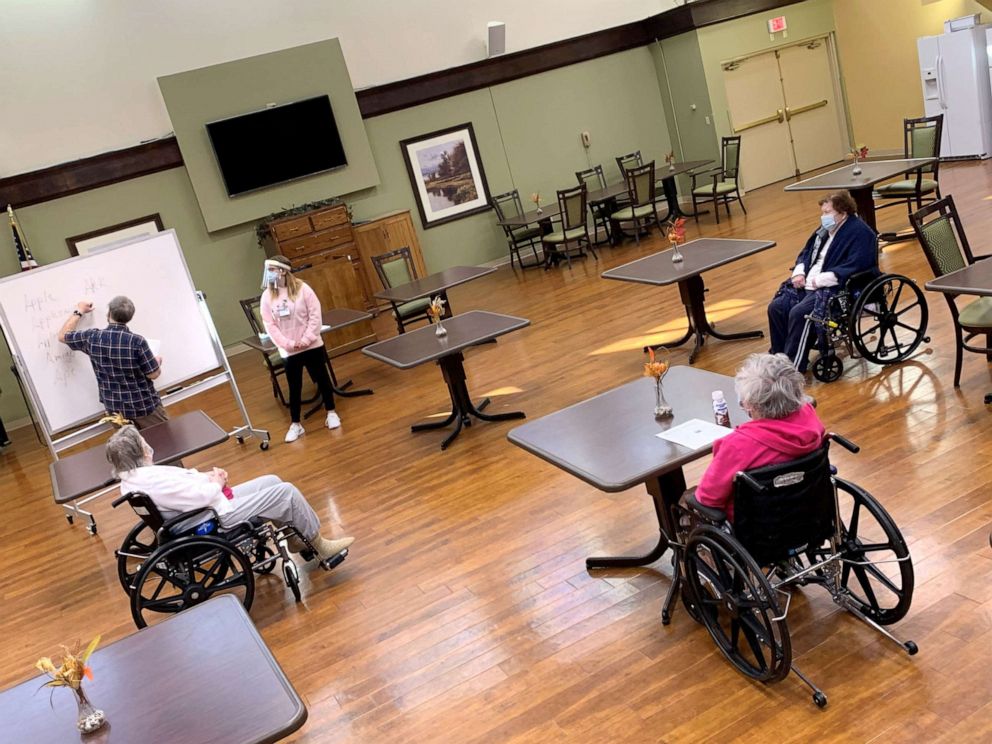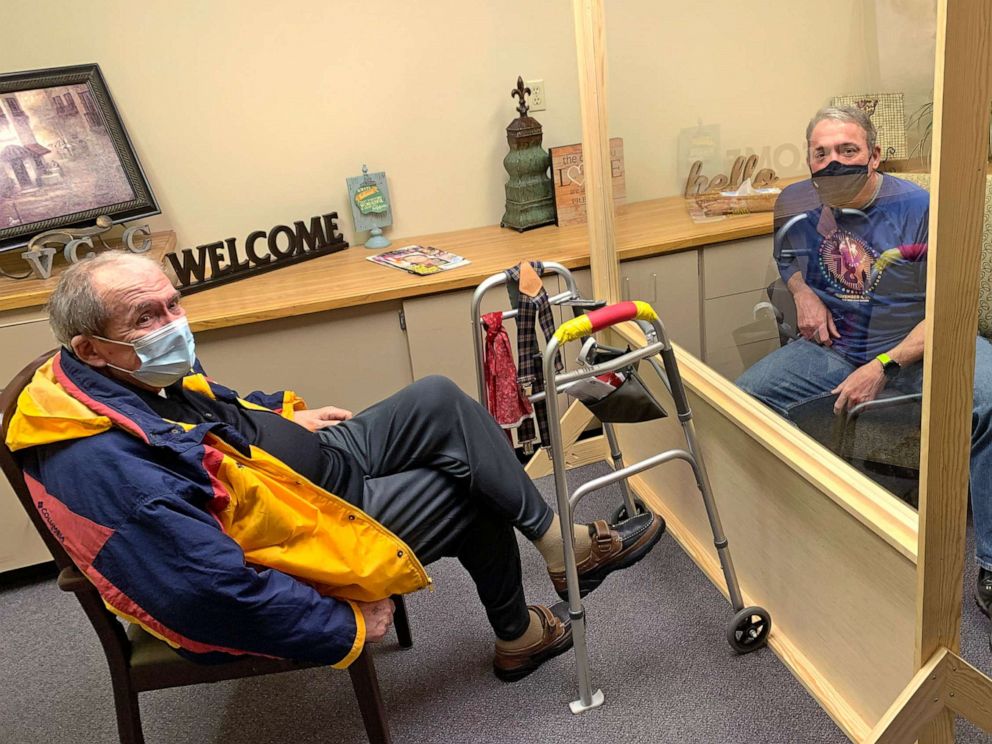After a dark and deadly year, COVID-19 vaccines bring renewal, hope to hard-hit nursing homes
"It's a breath of fresh air," says a Missouri nursing home administrator.
After more than 11 months of isolation, the dining room at John Knox Village was filled with laughter and joy last week. Residents of the independent 430-bed nursing facility in a Kansas City suburb -- finally feeling the pall of the devastating coronavirus pandemic lifting -- played bingo and ate together.
"It's a breath of fresh air," said Anthony Columbatto, the administrator of the facility. "Getting to walk past the main dining room and seeing people enjoy getting to have a little bit of normalcy is the best. It's the little things that I think we've taken for granted in the past that are so important."
The Knox nursing home is among the thousands of long-term care facilities that are slowly reintroducing communal activities and allowing some visitors. Though the restrictions still differ by state, a significant dip in deaths and cases is being seen across the country.
And long-term care facilities are seeing conditions improve faster than the nation overall. Experts say the numbers suggest that vaccination efforts -- which have prioritized the elderly in congregant settings -- are working. Deaths in long-term care facilities are declining not just in absolute numbers, but as a share of COVID-19 deaths across the whole country.

"There's evidence around the country that once residents are vaccinated, cases and deaths go down," said Mike Wasserman, the past president of the California Association for Long Term Care Medicine and a member of the California's Vaccine Advisory Committee. "From the beginning, this group has been the one at the greatest risk, and getting residents vaccinated has been critical. It's the final step in protecting this incredibly vulnerable group."
Nursing facilities are home to some of the populations most vulnerable to COVID-19 -- the elderly and sick. Since the start of the pandemic, more than 160,000 nursing home residents and staff have died, according to an analysis by the American Association of Retired Persons. Approximately 1.4 million people live in nursing care in the U.S.
"The pandemic's devastating toll on nursing homes has been a nightmare filled with isolation and fear for residents and staff, but we are seeing an awakening of new hope," said Terry Fulmer, president of the John A. Hartford Foundation, a nonprofit that works to improve care for older adults. "Vaccinations in nursing homes are appearing to dramatically reduce COVID-19 cases and deaths, and we know that reductions in community spread also play a role in minimizing the threat of infections in facilities."
At the Good Shepherd nursing home in West Virginia, one of the first states to complete vaccinations in all its elder care settings, residents can "finally get some fresh air" and also attend Mass, said Morgan Murphy, the assistant administrator of the facility.
"[Tuesday] was the first day Good Shepherd Nursing Home has been open to visitors since October," Murphy told ABC News. "It's been very exciting for our residents and their families."

For Mary Moscato, president of Hebrew SeniorLife Health Care Services and the Hebrew Rehabilitation Center in Boston, the challenge now is figuring out what the new normal will look like.
Regulations governing ongoing testing, the wearing of protective equipment, the implementation of infection control practices, and limitations on visitation still remain in place, she said.
"It is not expected that long-term care facilities will return to pre-pandemic operations," Moscato said. "Many regulations specific to safety measures and infection control that were instituted during the pandemic will remain in place."
The good news, said Dr. Sachin Jain, an internal medicine physician and the CEO of SCAN Health Plan, is that as the threat of the virus lifts, many long-term care residents can finally look forward to seeing their loved ones.
"Many older people have been largely alone for about a year now," said Jain. "As vaccine distribution spreads, all of us with a connection to an older adult should make it a priority to end their isolation, which has been shown to have serious negative health effects. Togetherness, on the other hand, improves all of our lives as well as our communities."
Amber Fisher, a nurse at John Knox Village, said that although the trauma of the last year will remain for a long time, she is looking forward to seeing the facility get back to "as normal as it can be."
"It's been a horrific year," Fisher said of the facility, which lost more than 20 of its residents. "But there's finally some light at the end of this dark tunnel."




